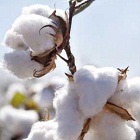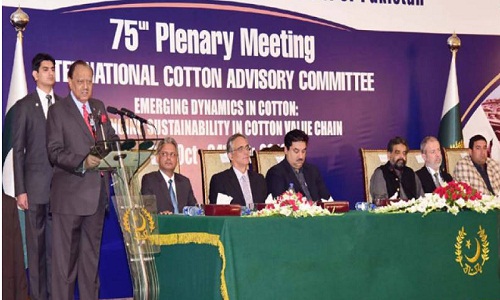"The recently held 75th Plenary Meeting of International Cotton Advisory Committee (ICAC) in Islamabad, Pakistan, from October 30 to November 4, 2016 put the spotlight on key issues faced by the cotton fibre. The meeting was attended by 378 persons, including representatives from 14 members, four international organisations and four nonmember countries."

The recently held 75th Plenary Meeting of International Cotton Advisory Committee (ICAC) in Islamabad, Pakistan, from October 30 to November 4, 2016 put the spotlight on key issues faced by the cotton fibre. The meeting was attended by 378 persons, including representatives from 14 members, four international organisations and four nonmember countries.
Cotton demand exceeds production for the second consecutive year. The Secretariat reported that cotton output in 2015-16 fell due to pest attacks, competitive prices from other crops, climate change, etc., resulting in the reduction in world stocks. Although inventories are still higher than usual, the excess has started to be trimmed. Cotton continues to be challenged with an extremely competitive environment.
Polyester posing a threat

Polyester fibre is causing the biggest trouble for cotton. Presentations made during the session on inter-fiber competition highlighted the increasing share of the world fibre market occupied by polyester. The results showed that polyester had made considerable gains in the market for downstream products, such as yarn, filament, staple and apparel. This trend is witnessed due to cheaper polyester prices caused by current oil prices and underutilised industrial capacity in the polyester industry.
The committee highlighted three challenges faced by the textile industry viz., water, energy and the need for creative new ideas. The cotton industry needs to use less water, by concentrating on reducing energy consumption in cotton gins and transportation, and by creating and applying new ideas, especially for increasing efficiency and reducing costs. One example would be to use High Volume Instrument cotton classing systems throughout the industry to replace the ancient practice of visual classing.
Costs of cotton production
The world average net cost of production (excluding land cost) of cotton lint was $1.16/kg in 2015-16. Reducing the water footprint of cotton and increasing farmers’ income go hand in hand. Growth in demand for water, climate change and increasing population are putting ever more pressure on the use of water in agriculture in general and in cotton cultivation, in particular. Presentations were made by researchers on topics such as application of critical assessments of the performance of irrigation systems; reduction of conveyance losses; implementation of precision agriculture; deficit irrigation; use of irrigation scheduling models; maximisation of yield per unit of water used; innovative methods of irrigation, such as short furrows and laser leveling of furrows; and breeding for high-yielding drought-resistant varieties through conventional breeding and genetic engineering. Practical examples showed that the water footprint of cotton can be significantly reduced, while improving the incomes to the farmers.
Bt cotton changes the textile industry
Cultivation of Bt cotton has changed the pest complex in many countries, so changes in pest control methods are required. Bt cotton benefitted farmers by reducing the need for insecticide sprays and positively impacted yields without raising the cost of fertilisers and agronomic operations. Pink bollworm in some countries has developed resistance to the earlier insect-resistant biotech technologies. They caused huge losses in yield in India and Pakistan during 2015, demanding a reversion to traditional varieties of cotton and traditional methods of insect control in some countries. Although the situation improved in the current season, pests still require vigilance. The dusky cotton bug and the cotton mealybug have also emerged as major pests; the whitefly and leaf curl virus is becoming greater concern. Biotech cotton resistant to the whitefly is at advanced stages of development. When commercialised, these new varieties will bring a big relief to growers. Experts reported similar progress on transgenic cotton resistant to the leaf curl disease.
Focused cotton policies the way ahead
Presentations on public policy for the cotton sector emphasised that cotton faces great threat from Man Made fibers, especially polyester. Cotton producers must innovate, adopt and implement cutting edge technologies that improve productivity at lower costs to stay ahead of the curve. Government policies should focus on allowing prices to fluctuate with market forces, increasing funding for agricultural research, and implementing science based regulations that allow technology development and adoption.
The next plenary session will be held in Uzbekistan during October 2017 on the theme ‘Opportunities and Challenges for Technology Transfer in Cotton’.












